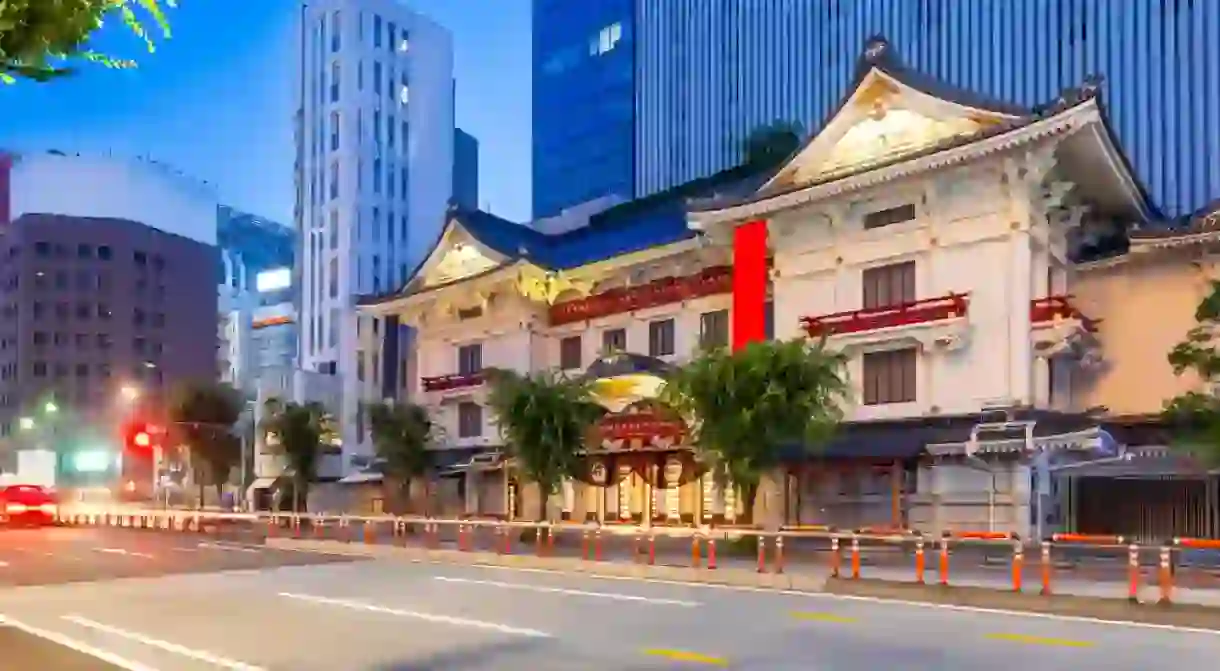The Best Things to Do and See in Chuo, Tokyo

Explore Tokyo‘s Chuo Ward and discover the top attractions, from museums and historical landmarks to temples and shopping.
>> Lacking ideas? Check out some of the best tours to experience whilst in Tokyo!
Tsukiji Hongan-ji
Buddhist Temple, Shrine

The Tsukiji Hongan-ji temple was once known as the Edo-Asakusa Gobo and was located in Asakusa (1617). It was razed by fire, moved to Tsukiji, but crumbled once again under during the Great Kanto Earthquake of 1923. The current temple building is a strikingly unique piece of architecture, and was finished in the 1930s.
Amazake Yokocho
Market

Amazake Yokocho is a shopping street lined with restaurants, small boutiques, and snack stands. The name means “Sweet Sake Alley,” and it was named after the shop that marked the entrance during the Meiji Period.
Hamarikyu Gardens
Park

Hamarikyu Gardens are located at the mouth of the Sumida River. These traditional Japanese strolling gardens include ponds, a small shrine, and a couple of old fashioned teahouses where visitors can stop for tea and wagashi (Japanese sweets).
Tsukiji Fish Market
Market, Shop

Tsukiji Fish Market is the largest seafood market in the city. The real attraction for visitors is the Outer Market, where the fresh seafood can be purchased at a reasonable price.
Kabuki-za
Theater
Kabuki-za is the largest and most prominent kabuki theater in Tokyo. It’s located in Ginza. Performances are held regularly here, and tickets can be bought online in advance.
Ginza
Market, Park

Ginza is a financial and business center, rumored to be one of the most expensive real estate markets in the city. Several banks and large corporations have offices here. It’s also known for its luxury department stores and upscale boutiques on and around Chuo-dori.
Namiyoke Inari Shrine
Shrine
Namiyoke Shrine was built on reclaimed land in 1659. It is thought to be the guardian shrine of Tsukiji Fish Market and the workers who do business there. Built on the water’s edge, it is a shrine dedicated to Inari Okami, one of the major deities of the Shinto faith.
Nihonbashi/Edo Bridge
Bridge

Known as Nihonbashi (Japan Bridge, after which the district is named) or Edo Bridge, it was built in 1911, replacing a wooden one that dated back to the 17th century. During Japan’s economic bubble of the 1980s, a modern highway bridge was built over Edo Bridge. The old bridge is now a historical landmark of the Nihonbashi district.
Mitsui Memorial Museum
Museum
The Mitsui Memorial Museum is an art museum focusing on Eastern art and culture, located inside the Mitsui Main Building of Nihonbashi. The structure is a designated Important Cultural Property. Most of the art once belonged to the private collection of the Mitsui family.













